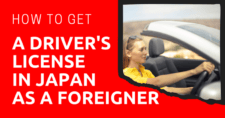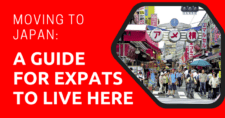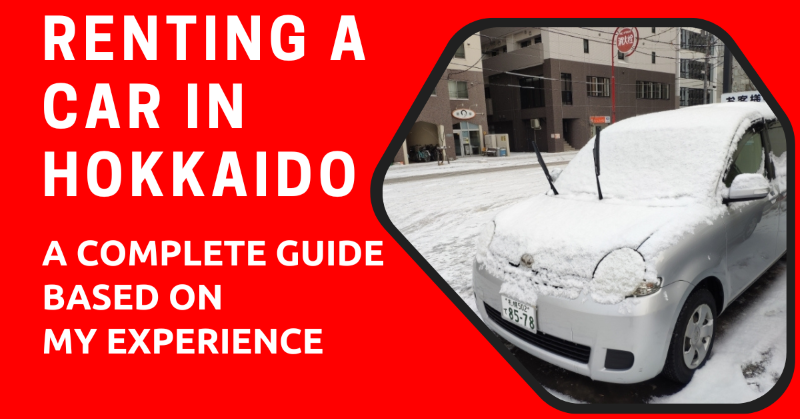
I’ve been to Hokkaido countless times, and driving there is still one of my favorite experiences. In this guide, I’ll share everything I’ve learned about renting a car in Hokkaido, from winter driving tips to the best routes and rental companies.
I’ve lost count how many times I’ve been to Hokkaido. My brother lives there with his family. I usually visit every other year and stay for at least a week or two. Sometimes, months.
Every time I’m there, one of my favorite things to do is go on a road trip. Unlike most parts of Japan, public transportation in Hokkaido isn’t that great. So, to explore the island properly, nothing beats driving on your own.
I’ve driven through many parts of the island and know it quite well. If you’re planning to visit Hokkaido and rent a car, this article is for you. I’ll share everything you need to know based on my own experience.
Also, my brother runs a travel company in Hokkaido. He’s rented cars easily over 100 times, so a lot of what I’m sharing comes from both of our experiences.
This article will take approximately 29 minutes to read. Don't have the time right now? No worries. Email the ad-free version of the article to yourself and read it later!
Disclaimer: This article may include links to products or services offered by ExpatDen's partners, which give us commissions when you click on them. Although this may influence how they appear in the text, we only recommend solutions that we would use in your situation. Read more in our Advertising Disclosure.
Contents
- Key Takeaways
- Why Rent a Car in Hokkaido
- Requirements for Renting a Car in Hokkaido
- Choosing the Right Car
- Recommended Car Rental Companies
- Cost of a Rental Car in Hokkaido
- Rental Car Add-ons
- Car Comparison Websites
- Car Insurance
- Car Rental Procedure
- Returning the Car
- The Importance of an ETC Card
- Snow Tires
- Driving Tips in Hokkaido
- Filling Up Gas in Hokkaido
- Road Trips Example
- How About Renting a Car with a Driver?
- Dealing with Emergencies
- Now, on to You
Key Takeaways
- Driving is the best way to explore Hokkaido since public transportation doesn’t reach many natural attractions.
- You need an International Driving Permit (IDP) under the 1949 Geneva Convention to rent a car.
- Roads are smooth but often empty. You should watch your speed and always follow traffic laws.
- Get an ETC card and a Hokkaido Expressway Pass to save time and money on tolls.
- For me, MPVs like the Toyota Alphard or Nissan Serena are ideal for long trips and families.
- Major rental companies include Toyota Rent a Car, Nissan Rent a Car, Nippon Rent a Car, and Times Car Rental.
- You should expect to pay around ¥10,000–30,000 per day depending on the car type and season.
- Always fill up your tank and keep the gas receipt before returning the car.
- Driving lets you reach hidden gems like the Blue Waterfall, Lake Machu, and Shiretoko National Park that are hard to visit without your own vehicle.
Why Rent a Car in Hokkaido
For those who aren’t familiar with Hokkaido, it helps to understand the geography first.
It’s a big island
Hokkaido is Japan’s largest prefecture. When you look at a map of Japan, it’s that big island that looks like a string ray at the very top. It’s also the 21st largest island in the world, slightly smaller than Ireland.
To give you an example of how big Hokkaido is, if you were to drive from Hakodate in the south to Shiretoko in the far east, it would take around 10 hours of non-stop driving.
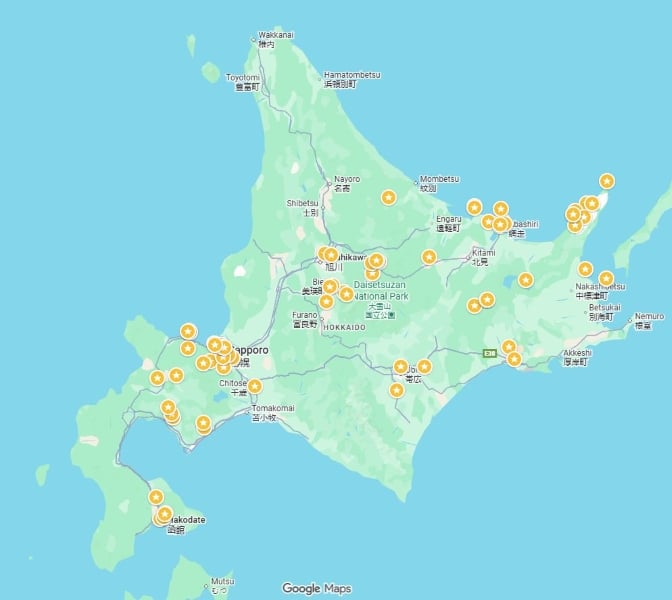
Limited Public Transportation
Because of its size, public transportation in Hokkaido is limited. It’s not like Tokyo or Osaka where you can easily rely on subways and trains. While there are trains and buses in some cities, they don’t cover the entire island.
Most travelers come to Hokkaido for its nature such as ski resorts, flower gardens, volcanoes, hot springs, and national parks. Many of these places aren’t accessible by train, and bus schedules can be limited to only a few per day.
While I’ve been to Hokkaido many times, I rarely take the train here except for the one from the airport to my brother’s house. Other than that, I mostly drive or take the bus to get around.
So, if you really want to explore Hokkaido freely, you’ll need to drive. The only exception is if you’re just staying in Sapporo and Otaru. But trust me, that’s not enough. You’ll be limited in the places you can go.
Requirements for Renting a Car in Hokkaido
Renting a car in Hokkaido follows the same rules as the rest of Japan. Here’s what you’ll need:
International Driving Permit (IDP)
You must have an International Driving Permit (IDP) issued under the 1949 Geneva Convention. Without it, you won’t be able to rent a car.
If you live in Japan, your IDP is only valid for your first year of residence. After that, to drive or rent a car in Japan, you’ll need to convert your home-country license to a Japanese driving license.
Age Requirement
This rule isn’t very strict in Japan since the legal driving age is 18. As long as you’re over 18 and have a valid International Driving Permit (IDP), most car rental companies won’t mind your age.
However, if you’re under 21 or over 70, some companies may charge an additional fee. It really depends on each company’s policy.
Know Japanese Driving Regulations
Rental companies won’t test you on this, but it’s important to understand local traffic laws. Japan is strict about enforcement. For example, a Thai tourist once drove at 135 km/h and ended up in court with a fine of about US$1,500. Fines can also be mailed to your home country, and unpaid penalties may cause problems when re-entering Japan.
And this happens more often than you might think. For example, my brother, who’s a PR holder in Japan, mentioned that traffic police in Hokkaido often contact him to help translate for Thai drivers who break traffic laws (usually for speeding) or get into accidents, especially during winter when the roads are slippery.
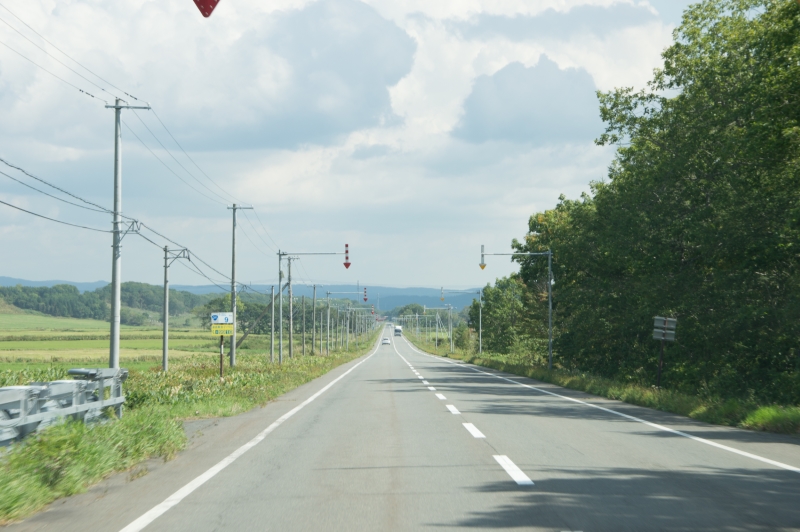
There are some important regulations you need to remember:
- Speed limits: 60 km/h in cities and 100 km/h on highways, though this can vary by area. Fortunately, most rental cars have GPS that shows the local limit. Be careful not to exceed it. Cameras are everywhere, and traffic police patrol regularly.
- 止まれ (Tomare): This red sign means “stop.” You’ll see it throughout the island. Always come to a full stop before intersections, look both ways, and then proceed. Do the same when crossing railway tracks.
- Keep left: Japan drives on the left side. The right lane is for overtaking only.
Tip: If you’re not sure about the speed limit, just follow the flow of traffic like the locals do. When someone speeds up in the right lane, others often follow. Still, don’t take unnecessary risks. Many drivers in Hokkaido go over 120 km/h on highways, but remember. It’s entirely at your own risk.
Experience Driving in Snow
Hokkaido is famous for its powder snow and ski resorts. It’s also Japan’s coldest region. Snow can start as early as late October and last until May in some areas.
If you’re visiting during winter, you should have some experience driving on snow and ice. Roads can be slippery and visibility poor.
Here are a few tips:
- Keep a safe distance from other cars since braking distances are longer on ice, even with snow tires.
- Drive slowly and avoid sudden turns. Many road accidents in Hokkaido happen in winter because drivers underestimate icy conditions.
- Invest in a good pair of sunglasses to protect your eyes from snow glare, which can be very strong on sunny days.
Also, make sure your rental car is equipped with winter (studless) tires. Most rental companies in Hokkaido include them by default, but it’s always better to double-check, especially if you’re visiting in late October when snow can arrive earlier than expected.
Choosing the Right Car
You might be tempted to rent a Kei car (small 600cc vehicle) because it’s cheap. However, don’t do that. Kei cars are fine for city driving, but in Hokkaido you’ll be driving long distances, often through hilly or rural terrain. It’s not a fun experience with a Kei car, and there’s not enough space for your luggage.
If you’re on a budget, get a car with at least 1,200cc for enough power and comfort.
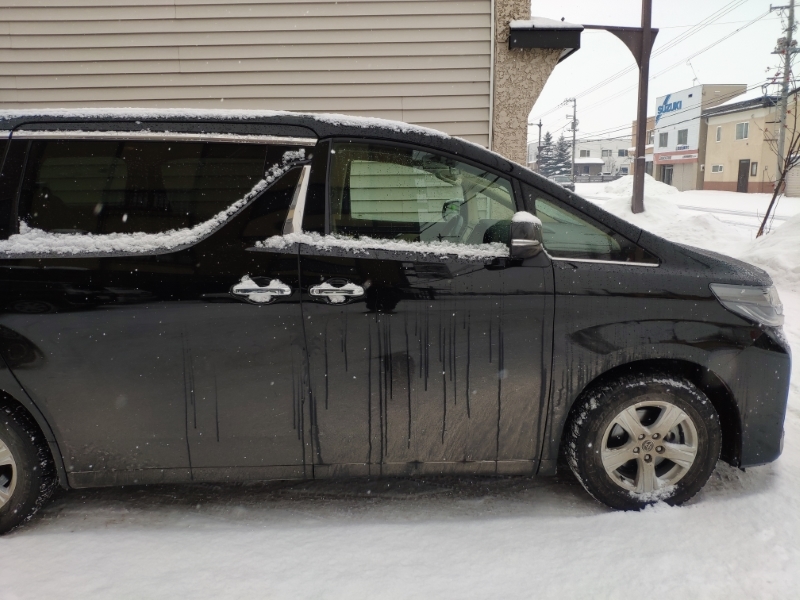
For me, I usually rent an MPV like a Nissan Serena or Toyota Alphard. They have plenty of luggage space, are comfortable for long drives, and often come with cruise control, which I regularly use when driving long distances.
This is also quite a family favorite since my family tends to buy an MVP car.
There are also 4WD options available, but I don’t think they’re really necessary unless you are planning to some rural areas during winter. Although Hokkaido is large, the roads are generally well maintained, even in rural parts of the island.
Recommended Car Rental Companies
One great thing about Japan is that rental cars are almost always in excellent condition. Japanese companies maintain their fleets very well.
I asked my brother, who has rented cars hundreds of times, which company he prefers. He said it honestly doesn’t matter because most companies maintain good standards.
He usually rents from Times Car Rental, mainly because it’s closest to where he lives and he has a membership card.
You have many options when it comes to rental companies in Hokkaido, including both Japanese and international brands:
- Toyota Rent a Car: Offers only Toyota vehicles.
- Nissan Rent a Car: Offers only Nissan vehicles.
- Nippon Rent a Car: Offers a wide range of popular Japanese car models. Prices tend to be higher than other companies, but the cars are well maintained and in good condition.
- Orix Car Rental: A budget-friendly option. Cars here can be older models.
- Budget Japan: An international brand.
- Times Car Rental: My brother’s favorite since he has a membership card.
It’s also good to know that you may notice international brands like Alamo, National, or Enterprise here. However, these brands usually partner with Nippon Rent a Car. This means that when you rent a car from one of these international companies, you’re actually renting from Nippon Rent a Car.
There are many more car rental companies beyond these. I don’t worry too much about which one to choose. In most cases, you can just pick the one with the most convenient location that has a car model you want to drive.
All of these companies follow good maintenance standards, so you can confidently rent from any of them.
Cost of a Rental Car in Hokkaido
The cost of renting a car in Hokkaido is quite similar to other parts of Japan and depends on several factors such as:
- Car model
- Rental company
- Season (for example, during summer, from July to August, which is Hokkaido’s peak season, prices can be up to twice as high)
In general, you can expect to pay around ¥10,000 to ¥15,000 per day for a sedan and ¥20,000 to ¥30,000 per day for an MPV.
Prices can vary depending on the season, available promotions, and the specific car model you choose.
Rental Car Add-ons
When you rent a car in Hokkaido or other parts of Japan, there are several optional add-ons you can choose:
- GPS: This is normally included in the rental price, so you don’t need to pay extra for it.
- ETC card: This is basically a tollway card. If you plan to use toll roads (which is generally recommended in Hokkaido), you should rent one. It usually costs around ¥200–300 per day.
- Car seat/booster seat: This typically costs around ¥1,000–1,500 per day.
In addition to these, you can also choose your insurance type, which I’ll explain later in the article.
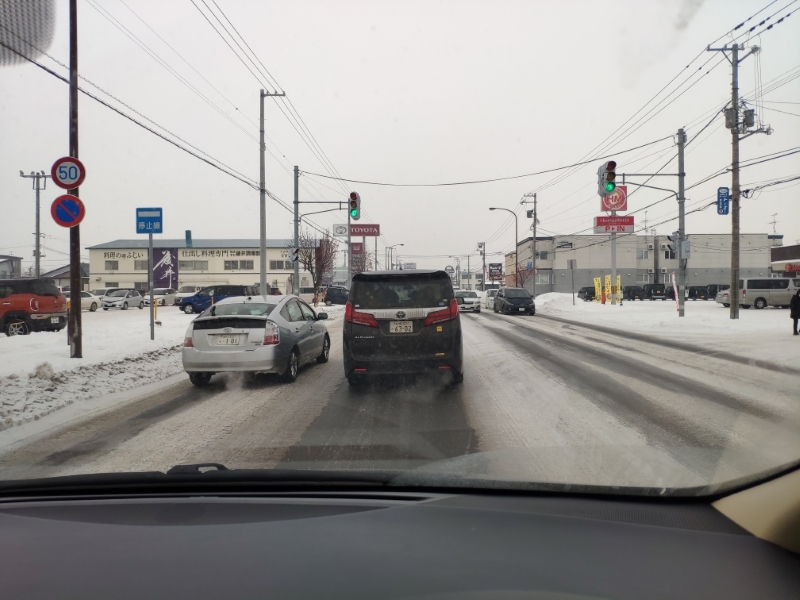
Car Comparison Websites
Instead of renting directly, you can also use a car comparison website like DiscoverCars or RentalCars. Both let you compare prices from multiple providers at once.
In this section, I’ll show you key differences between booking directly through a rental company and booking through a comparison website.
Booking Directly Through a Rental Company
Booking directly through a rental company’s website can be a bit challenging. Many Japanese websites aren’t very intuitive and often rely on machine translation, which can make the English version confusing.
When booking, you also need to know some Japanese geography so you can select the correct rental location or station. While it takes a bit of effort, it’s definitely possible once you get used to it.
One great thing about booking directly is that it gives you more control over add-ons. For example, you can easily rent an ETC card (for highway tolls). It’s highly recommended if you plan to use toll roads in Japan.
Without an ETC card, there are some toll gates you simply can’t pass through since they’re for ETC users only.
Booking Through a Comparison Website
Comparison websites are much easier to use, especially for non-Japanese speakers. You can quickly compare rates from different providers and complete your booking in minutes.
One limitation is that most comparison websites don’t let you select add-ons like ETC cards during the booking process. You’ll need to contact the rental company afterward to request them.
You might also notice that companies like Alamo, National, or Enterprise appear on these websites, but in reality, the actual car will often come from a Japanese company such as Nippon Rent a Car.
If you want convenience, go with a comparison website. But if you want full control and access to all add-ons, book directly with a car rental company.
Car Insurance
Another good thing about renting a car in Japan is that rental cars generally come insured.
However, if you get into an accident, you might still have to pay some out-of-pocket costs depending on the insurance plan you choose.
Most companies offer three types of coverage:
| Plan | Daily Cost | Maximum Out-of-Pocket |
| No Insurance | Free | Up to ¥250,000 |
| Standard Insurance | ¥1,650 | Up to ¥100,000 |
| Full Insurance | ¥2,200 | None |
For example, this is the structure used by Nissan Rent a Car for their SUV models.
I normally choose full insurance for peace of mind. It costs a little more, but I prefer knowing I won’t have to pay anything if something happens. So far, I’ve never had to file a claim.
Car Rental Procedure
The process of renting a car in Japan is quite straightforward. After booking, just go to the rental office at the scheduled time.
Depending on the branch, it might be a standalone building, or in cities like Sapporo or Susukino, it could be inside a larger building. Just look for the signboard with the car rental company’s logo and follow the directions.
Here’s what usually happens:
- Show your booking confirmation (a phone screen is fine).
- Present your International Driving Permit and passport.
- Fill out a short rental form (available in both Japanese and English).
- Pay for the rental car. In most cases, only credit cards are accepted, and no deposit is needed.
- Inspect the car together with the staff. If there are any scratches or dents, they’ll point them out. I usually take photos myself as well.
- Collect the keys and start your trip.
That’s it.
Returning the Car
Returning the car is simple. The staff will check the vehicle for any damage.
However, there’s one key difference from many other countries. You need to show your latest gas receipt.
Before returning the car, what I normally do is to stop at a gas station near the rental office, fill up the tank, and keep the receipt. Then show it when returning the car.
If you skip this step, the company may charge you extra for fuel, even if the fuel gauge shows full. This is the normal practice throughout Japan, not just Hokkaido.
The Importance of an ETC Card
One important thing to know when renting a car in Japan is the ETC card, which stands for Electronic Toll Collection. It’s a small card you insert into a slot inside your car that allows you to use toll roads without paying cash at every gate.
Toll roads are a game changer when driving in Hokkaido because they can save you several hours of travel time.
For example, when you arrive at New Chitose Airport (the main airport in Hokkaido) and want to drive to Asahiyama Zoo to see the penguin parade in winter, the trip takes about 2 hours with a toll road, but nearly 3 hours without one.
Or if you plan to visit the Hell Valley at Noboribetsu Jigokudani, it takes about 1.5 hours with a toll road and 2.5 hours without one.
So, having an ETC card is very useful when driving in Hokkaido. You need to pay an extra of around ¥300 a day for it.
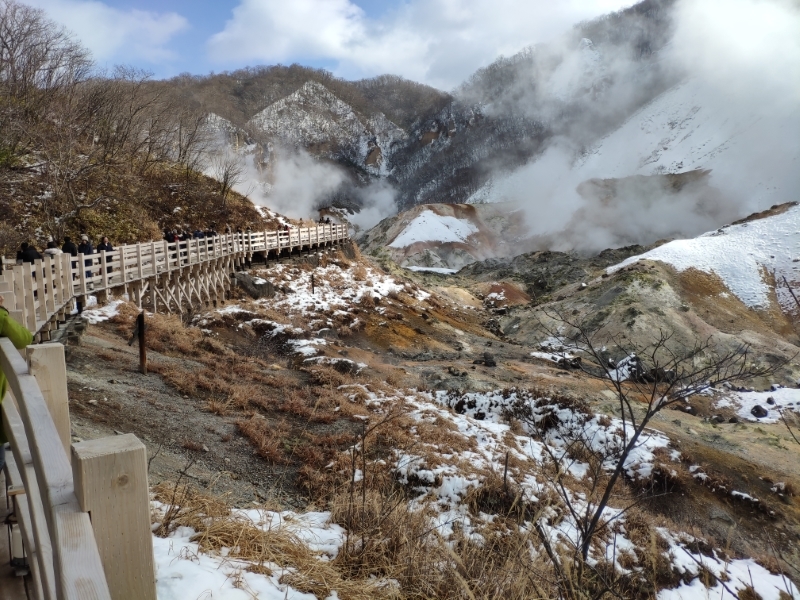
When you rent an ETC card, don’t forget to get the Hokkaido Expressway Pass as well. You can buy it directly from the car rental company. This pass allows you to use all expressways in Hokkaido with unlimited access for a set number of days.
The price starts at ¥7,700 for a 4-day pass, and it’s totally worth it since toll roads in Hokkaido can be quite expensive. For instance, a one-way toll from Chitose Airport to Asahikawa costs around ¥4,810.
The pass is available only to tourists. I always get it when going on a road trip in Hokkaido. My brother, who lives there, usually rents the car under my name so I can buy the pass, since residents in Japan aren’t eligible.
You can find more details here.
If you don’t have an Expressway Pass and take a toll way, you will need to pay it to a car rental company when returning the car.
Snow Tires
Hokkaido is known for its snow. During winter, generally from November to April, car rental companies automatically equip their cars with snow tires, so you don’t need to pay extra for them.
However, if you visit Hokkaido in early winter, such as in late October, and plan to drive in snowy areas, it doesn’t hurt to specifically request snow tires just to be safe. However, some companies just may charge extra like ¥600 a day.
Driving Tips in Hokkaido
Here’s some driving tips in Hokkaido.
Driving in Hokkaido
It’s very easy to drive in Hokkaido. The roads are well paved and in good condition. I actually find it much easier to drive here than in Thailand.
When I drive, I usually stay in the left lane and follow the flow of traffic. I only use the right lane when overtaking.
One thing that took me a little time to get used to is turning right at intersections. In some places, even when the light shows that you can turn right, cars from the opposite direction may still be moving straight ahead. So you need to wait until the road is clear before turning.
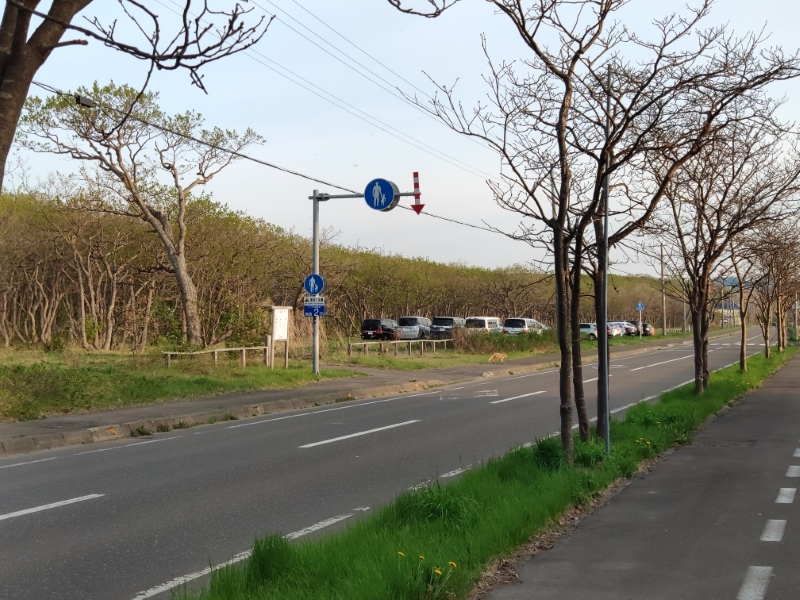
Another thing to watch out for is U-turns. On rural roads, Japanese drivers sometimes make sudden U-turns across lanes without using their turn signals. It doesn’t happen often, but it’s something to stay alert for when driving outside the city.
Careful: If you drive in rural parts of the island, watch out for wildlife signs. Hokkaido’s nature is still very well preserved, and it’s not unusual to spot deer, foxes, or even bears. In fact, traffic accidents caused by deer are still quite common. Occasionally, you might even see a bear on the road. Here’s a video of it.
Parking
Parking in Hokkaido is generally very easy. Unless you’re in a city like Sapporo, Otaru, or Hakodate, you usually don’t need to pay for parking. Most attractions, restaurants, and hotels outside big cities have free parking spaces, and they’re easy to find.
However, if you stay in an Airbnb or a budget hotel, especially in the city, parking might not be available. In that case, you’ll need to use a paid parking lot nearby.
Paid parking in Japan is fully automated. After you park, a locking plate under your car will rise in a few minutes. When you’re ready to leave, go to the payment machine near the exit, enter your car’s number, and pay the fee. The lock will lower, and you can drive away.
You can see how it works in this YouTube video.
Tip: When driving into cities like Sapporo, Otaru, or Hakodate, it’s a good idea to look for parking in advance. What I usually do is search for “parking” on Google Maps. Locals often post photos showing the rates, and I just pick the one with the cheapest price nearby.
Filling Up Gas in Hokkaido
You should learn how to fill up with gas by yourself before driving in Hokkaido. There are two types of gas stations here:
- Self-service (セルフ): You pump the gas yourself. It’s cheaper.
- Full-service (フル): Staff will fill the gas for you and clean your windshield. It’s more expensive.
If you go to a self-service station, you’ll need to use the machine to select:
- Your payment method (cash is usually easiest).
- How much fuel you want to fill (full tank or by amount).
- Whether you have a membership card or not.
Not all machines have English options, so I recommend watching this YouTube video to see how it’s done.
When it comes to fuel, there are three types of fuel.
- Regular (レギュラー): Standard unleaded gasoline.
- Premium (ハイオク / Hi-Octane): High-octane gasoline.
- Diesel (軽油): For diesel vehicles only.
While most stations accept credit cards, paying in cash is often faster and more convenient since Japan is still a very cash-based country.
Navigation and GPS
While most rental cars in Hokkaido come with built-in GPS, the real challenge is learning how to use it. Personally, I rarely rely on the car’s GPS except for checking speed limits. I mostly use Google Maps because it’s more convenient and accurate in English.
If you want to use the GPS system in your car, make sure to switch it to English mode first. You can ask the rental staff to help you before you start driving.
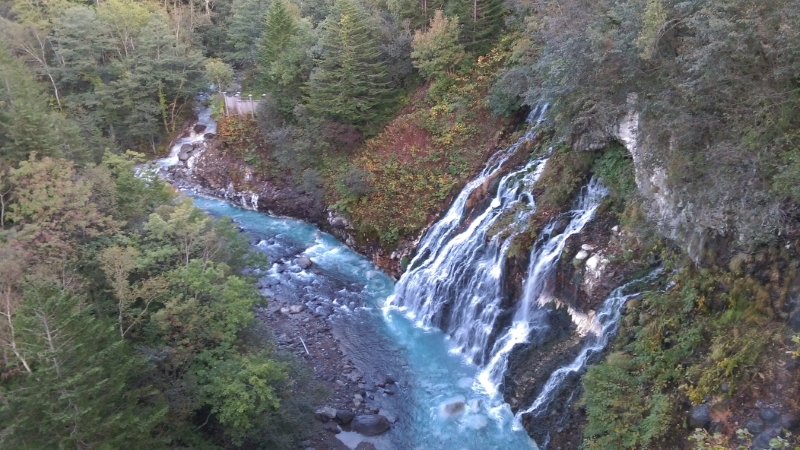
When searching for a destination, it’s best to use a phone number (for example, your hotel’s number) or a map code instead of typing the address. A map code is a unique 6- to 10-digit number used by Japanese GPS systems to pinpoint a location precisely. It’s much easier than typing long Japanese addresses.
You can find a map code by searching the place name followed by “map code” on Google. For example, “Asahiyama Zoo map code.” Once you have it, just enter the number into the GPS, and it will take you straight there.
That said, I rarely use the built-in GPS myself. It’s helpful to try, but Google Maps is usually simpler for most travelers.
Important: When driving in Hokkaido during winter, don’t always trust the GPS. This includes Google Maps. Heavy snow can cause road closures, especially in rural areas. A good rule of thumb is to stick to the main roads whenever possible. These routes are regularly cleared by snowplow trucks, making them much safer to drive on.
Road Trips Example
Here are some of my favorite road trips in Hokkaido. You can only experience them properly if you rent a car.
Summer Road Trip (July to August)
Although many people think of snow and ski resorts when they picture Hokkaido, the real peak season is summer from July to August. This is when the island bursts into color with vast flower fields and fresh, juicy melons.
Places to visit:
- Farm Tomita (map): Famous for its endless lavender fields. You can also enjoy freshly sliced melon here.
- Hinode Farm (map): A flower farm with a charming white bell tower in the middle, perfect for photos that feel like a wedding in a flower garden.
- Shikisai-no-oka (map): A panoramic flower garden with colorful rolling hills.
- Shirogane Blue Pond (map): A magical pond with crystal-blue water.
- Shirahige Waterfall (map): A stunning blue waterfall just a 10-minute drive from the Blue Pond.
Shiretoko National Park
If you have at least five days in Hokkaido, drive east to visit my favorite natural park, Shiretoko (map). You can see hot spring waterfalls, go bear watching, or even take a cruise to spot whales. Wildlife such as deer and foxes are commonly seen along the road.
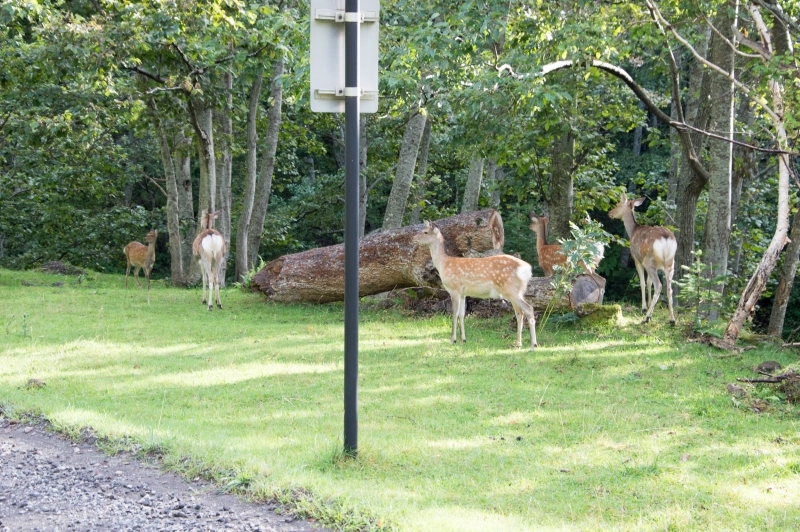
On the way to Shiretoko, stop by:
- Lake Akan (map) to learn about Ainu culture (the indigenous people of Hokkaido).
- Lake Mashu (map), one of the clearest lakes in the world.
- Abashiri Prison Museum (map), a historic agricultural prison.
If you visit during salmon season, you can even see salmon swimming upstream (map).
Lake Toya, Niseko, and Otaru
After landing at Chitose Airport, start your journey at Noboribetsu (map), a famous hot spring town with the dramatic “Hell Valley.” Continue to Lake Toya to stay at an onsen hotel beside the lake.
The next day, visit: Bear Ranch (map) and Mount Usu (map), a volcano that last erupted in 2000.
Then head to Niseko for its world-famous ski resorts and enjoy fresh jersey milk at Niseko Takahashi Dairy Farm (map). On your way back, stop at Fukidashi Park (map) to try pure spring water.
Before returning to Sapporo, make a final stop at Otaru, a port city known for its Otaru Canal (map), old walking streets, and the famous Steam Clock (map).
How About Renting a Car with a Driver?
If you don’t want to drive yourself, another great option is to rent a car with a driver. It’s more expensive but comes with the comfort of having both a driver and a local guide.
This option is especially recommended in winter since it’s much safer to have an experienced driver on icy roads. Many accidents in Hokkaido happen because tourists aren’t used to driving in snow.
However, expect to pay around ¥120,000–¥150,000 per day for this service.
Dealing with Emergencies
If you ever get into an accident or face an emergency while driving in Hokkaido, most rental cars actually come with an “emergency button.” You’ll usually find it near the rear-view mirror. Once you press it, the car automatically connects you to the police through the car’s built-in phone system.
I once accidentally pressed the button myself. The car immediately connected to the police, and an officer picked up within seconds. He spoke Japanese and asked what happened. When he realized it was just a mistake, he said “daijoubu” (that’s okay) and hung up. So, don’t press the button unless it’s a real emergency. Lesson learned.
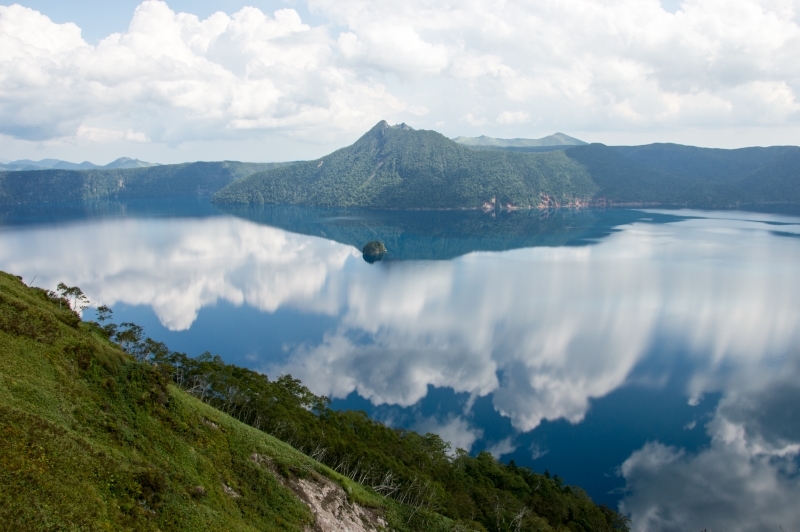
It’s also worth noting that most police officers in Hokkaido don’t speak much English. If you can, save a few emergency Japanese phrases on your phone or print them out before your trip. Simple words like “accident” (jiko), “help” (tasukete), and “injury” (kega) can be very useful.
Your rental company should also have their contact information displayed somewhere inside the car, usually on the dashboard or the glove box. Always contact them if you run into any trouble. And just in case, save Japan’s emergency number 110 on your phone before you hit the road.
Now, on to You
I hope this article gives you everything you need to know about renting a car in Hokkaido. If you ever get the chance to visit, go for it. Driving around is one of the best ways to explore and experience the beauty of Hokkaido at your own pace.
You can start renting a car by booking directly through one of the Japanese rental car websites. Or if you prefer convenience, use a comparison site like Discovercars to quickly find options in English.





